Costa Rica stands as one of the world’s most captivating destinations, where emerald rainforests cascade down volcanic slopes, pristine beaches stretch along two magnificent coastlines, and an abundance of wildlife thrives in protected national parks. This Central American gem has earned its reputation as a bucket-list destination for adventure seekers, eco-tourists, and nature lovers from around the globe.
From the iconic Arenal Volcano to the misty cloud forests of Monteverde, Costa Rica offers an incredible diversity of experiences packed into a country roughly the size of West Virginia. Whether you’re seeking heart-pounding adventures like zip-lining through rainforest canopies, peaceful moments soaking in natural hot springs, or unforgettable wildlife encounters with sloths, monkeys, and exotic birds, the best place to visit in Costa Rica offers something magical for every type of traveler.
In this comprehensive guide, we’ll explore Costa Rica’s top destinations, revealing why one particular location stands out as the ultimate must-visit spot, while also uncovering other incredible places that make this country a true paradise for travelers seeking authentic natural experiences.
Table of Contents
| Why Visit Costa Rica? |
| The Best Place to Visit in Costa Rica: Arenal Volcano & La Fortuna |
| Other Top Destinations in Costa Rica |
| Sample Itinerary Ideas |
| Travel Tips for Visiting Costa Rica |
| Conclusion |
| FAQ |
Why Visit Costa Rica?
Costa Rica has revolutionized eco-friendly tourism, becoming a global leader in sustainable travel practices. This progressive approach to conservation has preserved over 25% of the country’s land as protected areas, creating a haven for biodiversity that hosts nearly 5% of the world’s species despite covering just 0.03% of Earth’s surface.
The country’s commitment to eco-tourism in Costa Rica extends beyond environmental protection. Visitors can enjoy world-class adventure sports including whitewater rafting, zip-lining, surfing, and volcano hiking, all while supporting local communities and conservation efforts. The wildlife viewing opportunities are unparalleled, with chances to spot jaguars, scarlet macaws, three-toed sloths, and over 900 bird species.
Costa Rica’s excellent tourism infrastructure makes it accessible for travelers of all experience levels. The country boasts well-maintained roads connecting major destinations, reliable accommodations ranging from budget hostels to luxury eco-lodges, and a reputation for safety that makes it ideal for solo travelers, families, and couples alike. The warmth of Costa Rican people, known locally as “Ticos,” adds another layer of appeal with their genuine hospitality and the national philosophy of “Pura Vida” – pure life.
This Costa Rica travel guide will help you navigate the incredible options available, ensuring you make the most of your time in this remarkable destination.
The Best Place to Visit in Costa Rica: Arenal Volcano & La Fortuna
After extensive research and countless traveler testimonials, the Arenal Volcano region and the charming town of La Fortuna emerge as the best place to visit in Costa Rica. This spectacular destination combines natural wonders, adventure activities, wellness experiences, and cultural immersion in a way that captures the essence of what makes Costa Rica extraordinary.
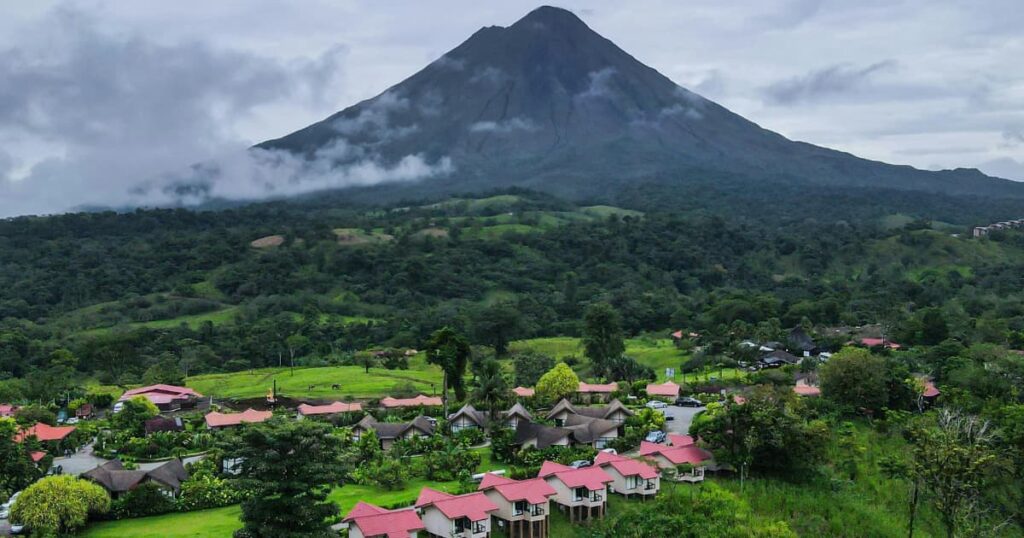
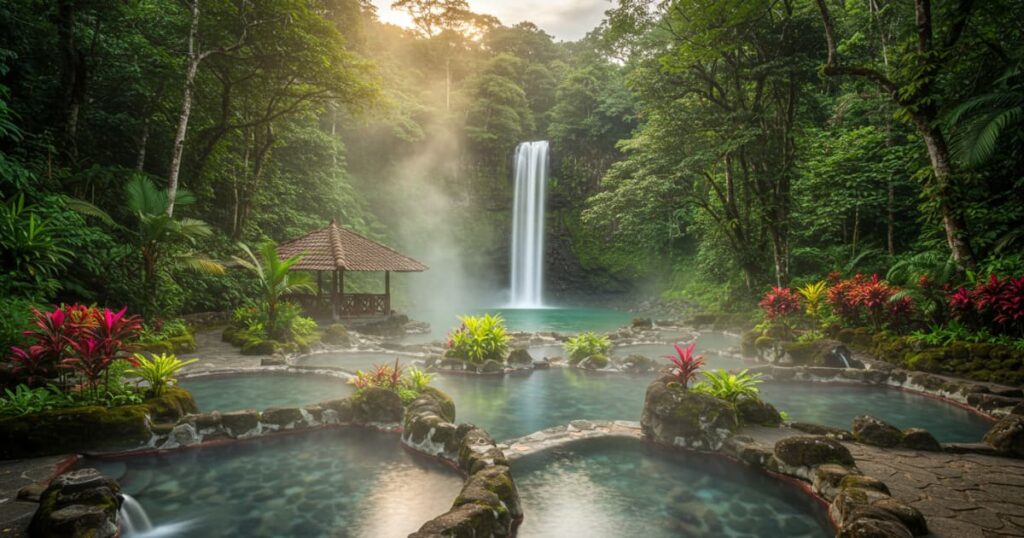
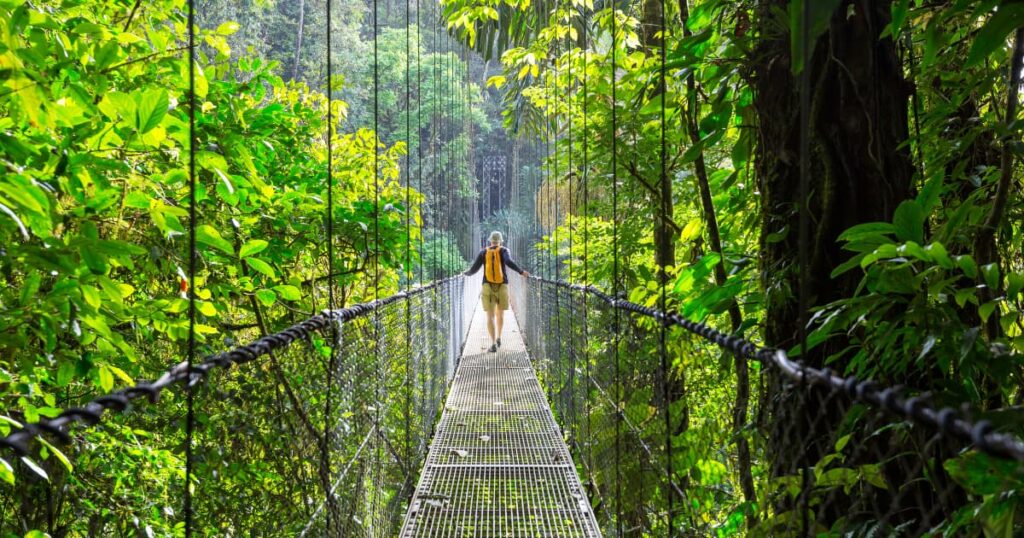
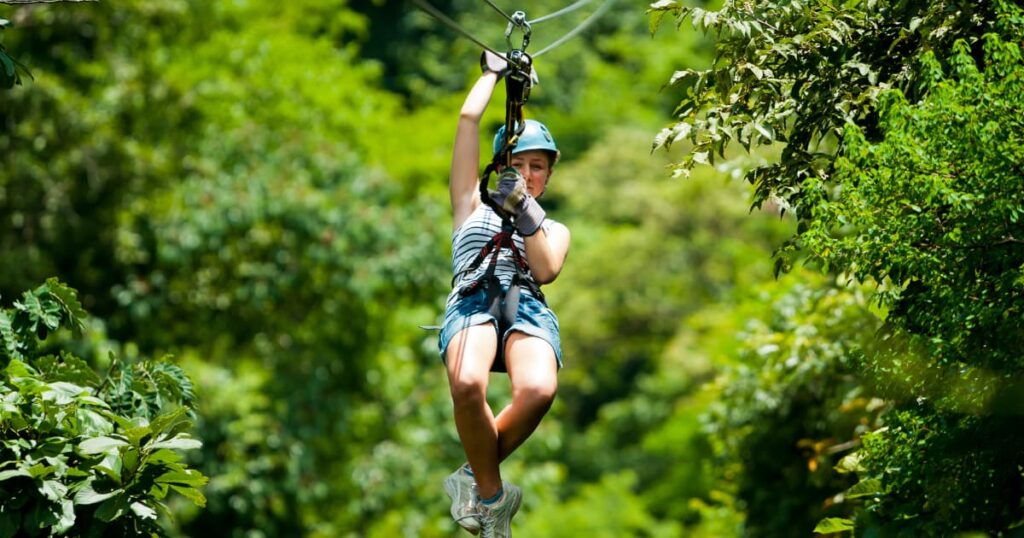

Arenal Volcano – The Icon of Costa Rica
Arenal Volcano stands as Costa Rica’s most recognizable landmark, a perfect cone-shaped stratovolcano that dominated the landscape with its fiery displays until entering a resting phase in 2010. Rising 5,437 feet above sea level, this geological marvel continues to captivate visitors with its imposing presence and the rich ecosystem flourishing on its slopes.
The volcano’s history adds intrigue to any visit. Once considered extinct, Arenal dramatically awakened in 1968 after a massive eruption that reshaped the surrounding landscape. For over four decades, it provided spectacular nightly displays of lava flows and explosions, earning it recognition as one of the world’s most active volcanoes. Today, while the dramatic eruptions have ceased, the volcano remains a stunning centerpiece surrounded by lush rainforest teeming with wildlife.
What makes Arenal the best place to visit in Costa Rica is its perfect combination of natural beauty and accessibility. Visitors can witness the volcano’s majesty from numerous vantage points, enjoy hiking trails through primary rainforest, and experience the geothermal activity that continues beneath the surface through natural hot springs and fumaroles.
La Fortuna Hot Springs & Waterfalls
The town of La Fortuna serves as the gateway to Arenal’s wonders, offering world-class natural hot springs that provide the perfect way to unwind after days of adventure. The geothermal activity from Arenal Volcano feeds several hot spring complexes, each offering a unique experience.
Tabacón Thermal Resort stands as the most luxurious option, featuring naturally heated pools cascading through lush tropical gardens. The mineral-rich waters, heated to perfect temperatures between 98-102°F, are believed to have therapeutic properties that soothe muscles and rejuvenate the spirit. EcoTermales provides a more intimate experience with smaller pools nestled in rainforest settings, while Baldi Hot Springs offers the largest complex with multiple pools, water slides, and swim-up bars.
The crown jewel of La Fortuna’s natural attractions is the spectacular La Fortuna Waterfall, a 246-foot cascade that plunges into a turquoise pool surrounded by pristine rainforest. The moderately challenging hike down to the waterfall base rewards visitors with the opportunity to swim in the refreshing waters while surrounded by tropical vegetation and the sounds of exotic birds and howler monkeys.
Adventure Activities Around Arenal
Adventure in Costa Rica reaches new heights in the Arenal region, where the diverse landscape provides endless opportunities for thrill-seekers. The area pioneered canopy zip-lining in Costa Rica, with several companies offering tours that send you soaring through the treetops at speeds up to 40 mph while providing breathtaking views of the volcano and surrounding rainforest.
Whitewater rafting on the nearby Balsa, Sarapiquí, and Pacuare rivers offers excitement for all skill levels, from gentle family floats to Class IV rapids that challenge experienced rafters. The crystal-clear waters wind through pristine rainforest where you might spot river otters, colorful birds, and iguanas basking on riverside rocks.
The Arenal Hanging Bridges provide a more contemplative adventure, offering a network of suspension bridges that allow you to walk through the rainforest canopy at a leisurely pace. This unique perspective reveals the incredible biodiversity of the cloud forest ecosystem, including opportunities to spot exotic birds, butterflies, and the elusive three-toed sloth.
Wildlife experiences around Arenal are exceptional, with guided night tours revealing the nocturnal creatures that emerge after dark, including owls, bats, frogs, and sometimes even large mammals like tapirs and jaguars. The region’s eco-lodges often feature wildlife corridors that attract animals directly to the property, allowing for incredible viewing opportunities without leaving your accommodation.
Best Activities
- La Fortuna: Waterfall, Arenal Volcano and Hot Springs Tour
- La Fortuna: Arenal Rafting Balsa River Class 2 & 3 Rafting
- Monteverde: Kinkajou Forest Night Walking Tour
- San Jose: Central Market Bites and Sights Walking Tour
- Monteverde: Thrilling Zip Line Canopy Tour
- Manuel Antonio Park: Guided Walking Tour with a Naturalist
Where to Stay in La Fortuna
La Fortuna offers accommodations for every budget and travel style, from budget-friendly hostels to ultra-luxury eco-resorts. Nayara Gardens provides the ultimate luxury experience with private villas featuring plunge pools and direct volcano views, while Tabacón Thermal Resort combines world-class hot springs with elegant suites.
For mid-range options, Arenal Observatory Lodge offers the closest accommodations to the volcano with comfortable rooms and excellent hiking trails, while Hotel Belmar provides modern amenities with stunning panoramic views. Budget travelers can find excellent value at Hostel Nido del Agua or Arenal Backpackers Resort, both offering clean accommodations with opportunities to meet fellow travelers.
Many properties in the area are eco-lodges that prioritize sustainability while providing comfortable accommodations. These establishments often feature on-site naturalist guides, organic gardens, and architecture designed to minimize environmental impact while maximizing comfort and views.
Best Time to Visit Arenal & La Fortuna
The best time to visit Costa Rica’s Arenal region depends on your preferences and priorities. The dry season (December through April) offers the clearest skies and best volcano viewing opportunities, with minimal rainfall and consistent sunshine. This period is ideal for hiking, zip-lining, and outdoor photography.
The green season (May through November) brings afternoon showers that keep the landscape lush and vibrant while offering lower accommodation rates and fewer crowds. Morning and early afternoon activities are typically unaffected by rain, and the increased cloud cover often creates dramatic and photogenic scenes around the volcano.
For the best balance of weather and value, consider visiting during the shoulder months of November, December, or May when you can enjoy favorable conditions with fewer crowds and moderate pricing.
Other Top Destinations in Costa Rica
While Arenal and La Fortuna claim the title of best place to visit in Costa Rica, the country offers numerous other spectacular destinations that deserve consideration for any comprehensive itinerary.
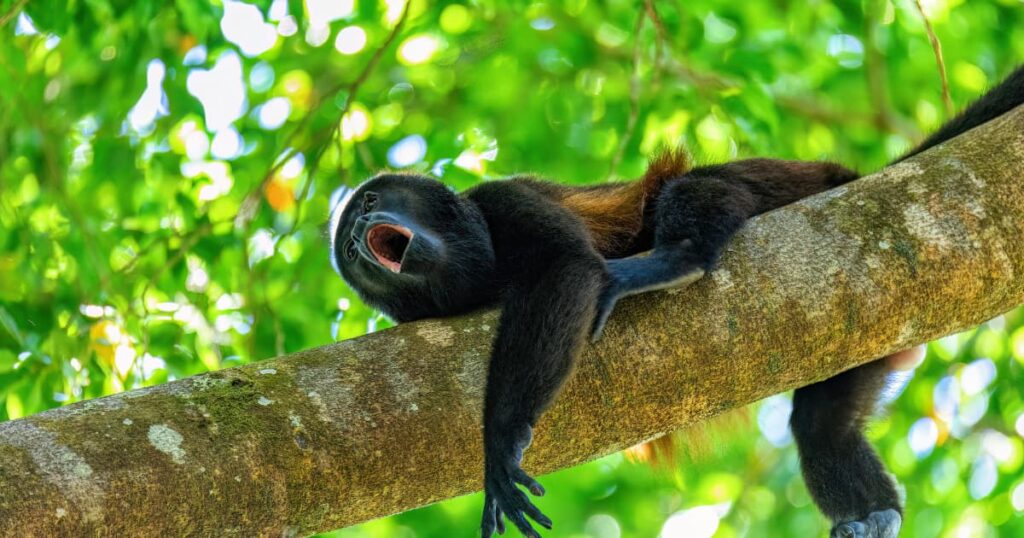


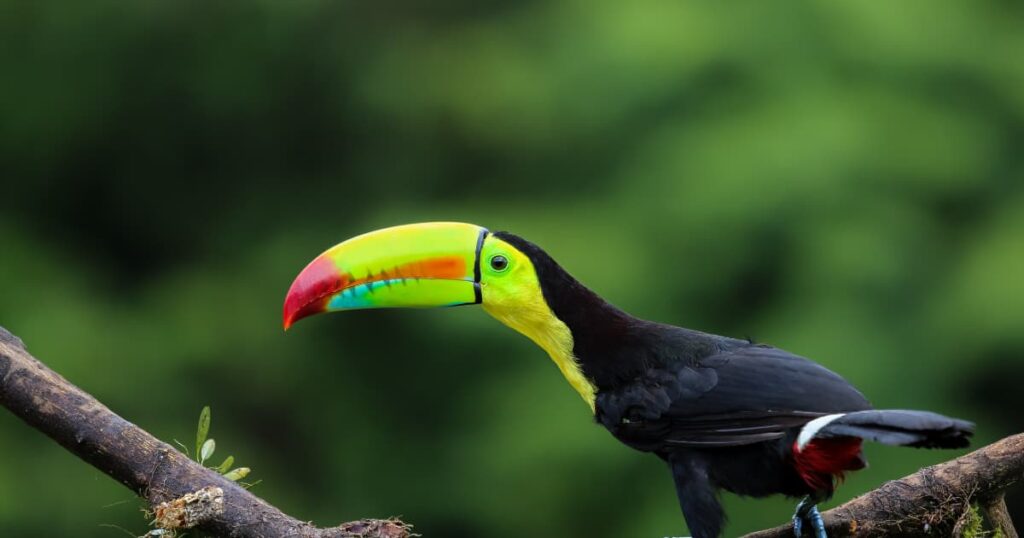

Monteverde Cloud Forest
Monteverde Cloud Forest Reserve represents one of the world’s most unique ecosystems, where persistent cloud cover creates an ethereal landscape of moss-draped trees and incredible biodiversity. This wildlife in Costa Rica hotspot hosts over 400 bird species, including the resplendent quetzal, and provides habitat for jaguars, ocelots, and over 100 mammal species.
The reserve’s canopy tours offer a different perspective from those in Arenal, focusing more on education and wildlife observation than pure adrenaline. The famous suspension bridges allow visitors to walk through the cloud forest canopy, while guided night tours reveal nocturnal creatures rarely seen during daylight hours. The area’s numerous butterfly gardens and hummingbird galleries provide intimate encounters with some of Costa Rica’s most beautiful creatures.
Manuel Antonio National Park
Manuel Antonio perfectly combines Costa Rica national parks with pristine beaches, creating an ideal destination for families and couples seeking both adventure and relaxation. This compact park protects 1,983 acres of tropical rainforest that meets the Pacific Ocean, creating habitat for white-faced capuchin monkeys, three-toed sloths, and over 180 bird species.
The park’s beaches rank among Central America’s most beautiful, with white sand coves framed by lush rainforest and calm waters perfect for swimming and snorkeling. The network of hiking trails leads to scenic overlooks and secluded beaches while providing excellent wildlife viewing opportunities. Monkeys are commonly spotted throughout the park, often approaching visitors in search of food.
Tamarindo
Tamarindo has evolved into Costa Rica’s premier surf destination, combining world-class waves with vibrant nightlife and a diverse international community. This beach town attracts surfers of all skill levels, with consistent breaks suitable for beginners and challenging waves for experts.
Beyond surfing, Tamarindo offers excellent sport fishing, sea turtle nesting tours, and mangrove kayaking adventures. The town’s numerous restaurants serve everything from traditional Costa Rican cuisine to international gourmet options, while beachfront bars provide the perfect setting for spectacular Pacific sunsets.
Tortuguero National Park
Located on Costa Rica’s Caribbean coast, Tortuguero National Park is accessible only by boat or small aircraft, creating an authentic off-the-beaten-path adventure. The park’s canal network winds through lush rainforest, offering sightings of manatees, river otters, caimans, and over 300 tropical bird species.
Tortuguero is renowned worldwide for sea turtle nesting, where four marine turtle species come ashore annually to lay their eggs. The peak nesting season (July through October) offers incredible opportunities to witness this ancient ritual, with guided tours providing education about conservation efforts while minimizing impact on the turtles.
Corcovado National Park
National Geographic has called Corcovado “the most biologically intense place on Earth,” and this remote park on the Osa Peninsula lives up to that reputation. Protecting one of Central America’s largest remaining lowland rainforests, Corcovado hosts an incredible 2.5% of the world’s biodiversity in less than 165 square miles.
This park is recommended for serious adventurers and nature enthusiasts willing to endure challenging conditions for the reward of witnessing untouched wilderness. Multi-day hiking and camping experiences provide opportunities to spot jaguars, pumas, tapirs, and over 400 bird species in their natural habitat.
Sample Itinerary Ideas
A well-planned Costa Rica itinerary allows you to experience the country’s diverse attractions while minimizing travel time and maximizing memorable experiences.
7-Day Classic Costa Rica Itinerary:
- Days 1-3: Arenal Volcano and La Fortuna (volcano views, hot springs, adventure activities)
- Days 4-5: Monteverde Cloud Forest (wildlife viewing, canopy tours)
- Days 6-7: Manuel Antonio (beaches, national park, relaxation)
10-Day Costa Rica Adventure:
- Days 1-4: Arenal and La Fortuna (extended time for multiple activities)
- Days 5-6: Monteverde Cloud Forest
- Days 7-8: Manuel Antonio National Park
- Days 9-10: Choose between Tortuguero for wildlife or Tamarindo for surfing
This itinerary structure allows for a good balance of adventure, nature, and relaxation while providing enough time in each destination to truly appreciate what makes each location special. Consider adding buffer days for unexpected weather and to relax, unwind, and fully enjoy Costa Rica’s authentic “Pura Vida” lifestyle.
Travel Tips for Visiting Costa Rica
Successful travel to Costa Rica needs preparation and local insights for a safe, smooth, and unforgettable vacation experience.
Entry and currency tips: Most travelers need a valid passport; some nationalities may also require a visa. The official currency is the Costa Rican colón, but US dollars are widely accepted throughout tourist areas. Credit cards are commonly accepted, though it’s wise to carry cash for smaller establishments and rural areas.
Transportation: Rental cars provide the most flexibility for exploring multiple destinations, though Costa Rica’s mountain roads can be challenging. Many travelers prefer organized tours or shuttle services between major destinations. Domestic flights connect major tourist areas and can save significant travel time.
Language and Communication: Spanish is the official language, but English is commonly spoken in popular tourist destinations and service areas. Learning basic Spanish phrases enhances interactions with locals and demonstrates respect for the culture. Most hotels and tour operators have English-speaking staff.
Health and Safety: Costa Rica is generally safe for tourists, boasting lower crime rates compared to many neighboring countries. Standard travel precautions apply, including securing valuables and being aware of surroundings. The tropical climate requires sun protection, insect repellent, and staying hydrated. No special vaccinations are required, though some travelers choose to get hepatitis A and typhoid vaccines.
The best time to visit Costa Rica depends on your priorities, but both dry season (December-April) and green season (May-November) offer unique advantages for different types of travelers.
Conclusion
Costa Rica truly offers something magical for every type of traveler, from adrenaline-pumping adventures to peaceful wildlife encounters and everything in between. While the entire country deserves exploration, the Arenal Volcano region and La Fortuna stand out as the best place to visit in Costa Rica for their perfect combination of natural wonders, adventure opportunities, and accessibility.
The iconic volcano serves as a stunning backdrop for world-class hot springs, spectacular waterfalls, and thrilling activities like zip-lining and whitewater rafting. Combined with excellent accommodations, delicious local cuisine, and the warm hospitality of the Costa Rican people, Arenal and La Fortuna provide an unforgettable introduction to this remarkable country.
Whether you’re planning a quick getaway or an extended adventure, Costa Rica’s incredible biodiversity, commitment to conservation, and “Pura Vida” spirit create memories that last a lifetime. From the misty cloud forests of Monteverde to the pristine beaches of Manuel Antonio, each destination offers its own unique magic while contributing to an overall experience that explains why Costa Rica consistently ranks among the world’s top travel destinations.
Start planning your Costa Rica adventure today and discover why this small Central American nation has captured the hearts of travelers from around the world. The incredible natural beauty, abundant wildlife, and genuine warmth of the Costa Rican people are waiting to welcome you to paradise!
FAQ
What is the number 1 place to visit in Costa Rica?
The Arenal Volcano area and La Fortuna town are among the top must-visit destinations in Costa Rica. This destination offers the perfect combination of natural wonders (active volcano, hot springs, waterfalls), adventure activities (zip-lining, whitewater rafting), and excellent infrastructure for tourists of all budgets.
How many days do you need in Costa Rica?
A minimum of 7-10 days allows you to experience Costa Rica’s highlights, including Arenal, Monteverde, and Manuel Antonio. For a more comprehensive experience with time to relax and explore multiple regions, 10-14 days is ideal. First-time visitors should plan at least a week to avoid feeling rushed.
What is the best time of year to visit Costa Rica?
The dry season (December-April) offers the best weather with minimal rainfall and clear skies, perfect for outdoor activities and volcano viewing. The green season (May-November) offers lush scenery, fewer tourists, and lower costs, with frequent afternoon rain showers. Both seasons have their advantages depending on your priorities.
Is Costa Rica safe for tourists?
Yes, Costa Rica ranks among the safest countries in Central America for travelers and tourists. It has a stable democracy, no military, and lower crime rates than many neighboring countries. Standard travel precautions apply, such as not leaving valuables unattended and being aware of your surroundings, especially in urban areas.
Do I need a visa to visit Costa Rica?
Most visitors from the US, Canada, EU, and other countries can enter Costa Rica visa-free for up to 90 days. You only need a valid passport with at least 6 months remaining validity. Check current requirements based on your nationality before traveling.
What currency is used in Costa Rica?
The official currency is the Costa Rican colón (CRC), but US dollars are widely accepted throughout tourist areas. Most hotels, restaurants, and tour operators accept both currencies. Credit cards are commonly accepted, though it’s wise to carry cash for smaller establishments and tips.
What language is spoken in Costa Rica?
Spanish is the official language, but English is widely spoken in tourist areas, hotels, and by tour guides. Learning basic Spanish phrases is appreciated by locals and enhances your travel experience, though you can navigate major destinations comfortably with English.
What should I pack for Costa Rica?
Pack lightweight, quick-dry clothing, rain jacket, comfortable hiking shoes, sandals, sunscreen, insect repellent, hat, and reusable water bottle. Bring layers as temperatures vary by elevation and region. Don’t forget a good camera for wildlife photography and a waterproof bag for electronics.
How much does a trip to Costa Rica cost?
Costa Rica can accommodate various budgets. Budget travelers can expect $50-75 per day including hostels and local meals. Mid-range travelers typically spend $100-200 per day for nice hotels and organized tours. Luxury travelers might spend $300+ per day for high-end resorts and private experiences.
What wildlife can I see in Costa Rica?
Costa Rica hosts incredible biodiversity including sloths, monkeys (howler, spider, capuchin), colorful birds (quetzals, toucans, scarlet macaws), reptiles (iguanas, snakes, caimans), and if you’re lucky, big cats like jaguars and pumas. The country is home to over 500,000 species in total.
Reviews
0.0 out of 5 stars (based on 0 reviews)
There are no reviews yet. Be the first one to write one.